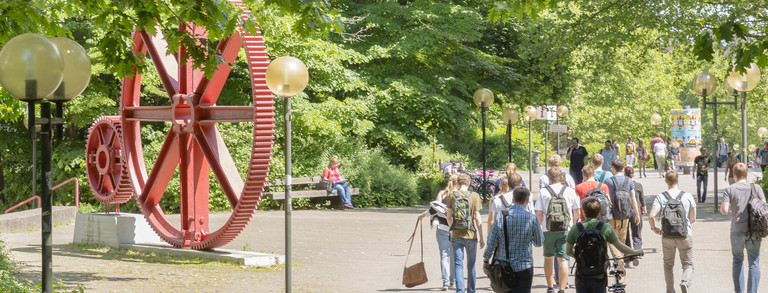Cooperations
Collaborative Research Center
Since 2011, we are part of the Collaborative Research Centre 876: "Availability of Information through Analysis under Resource Constraints" with the Department of Computer Science, among others.
We are part of project C3: "Multi-level statistical analysis of high-frequency spatio-temporal process data", under the direction of Prof. Dr. Katharina Morik (Faculty of Computer Science, TU Dortmund University), Prof. Dr. Dr. Wolfgang Rhode and Dr. Tim Ruhe (both from this chair).
The main task we are addressing in this project is the ever-increasing data rate of astrophysical experiments.
The current generation of telescopes does not yet require real-time handling of the recorded data. However, this will become necessary in the next generation of large telescopes in astronomy and astroparticle physics, which are currently in the planning or construction phases. This next generation - like CTA, SKA and IceCube-Gen2 - will take data with the highest precision and data rate ( about 1 petabyte/day). At such data rates, due to lack of measurement system memory, data must be selected in real time and signal data separated from background. Other challenges include the inherent limitations of telescope communications and isolated telescope sites. Our research on different data analysis and machine learning methods will help to solve these challenges.
More information and a list of published papers in our SFB project area can be found on the SFB website.
Competence Center
The Rhine-Ruhr Machine Learning Competence Centre ( ML2R) links the pioneering institutions for the development of artificial intelligence and machine learning in Germany: the Technical University of Dortmund, the Fraunhofer Institute for Intelligent Analysis and Information Systems IAIS in Sankt Augustin, the University of Bonn and the Fraunhofer Institute for Material Flow and Logistics IML in Dortmund.
In order to bring research on machine learning and artificial intelligence to a world-leading level, the close interlinking of basic and applied research provides the ideal basis for innovation.
The goals of ML2R are to establish cutting-edge research, promote young scientists and strengthen technology transfer to companies.

![[Translate to English:] [Translate to English:]](/storages/app-physik/_processed_/3/a/csm_APPGroupphoto2023_001_small_858e4405eb.jpg)


